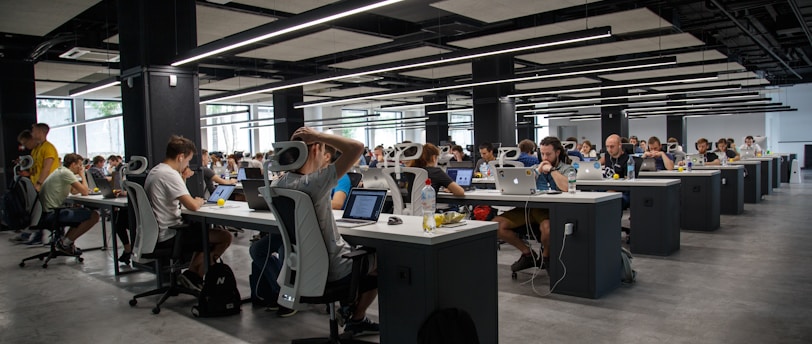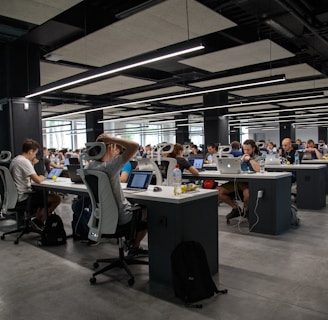The Future of Work: How AI is Reshaping the Workforce and Creating New Opportunities
5/12/20243 min read


The Future of Work: How AI is Reshaping the Workforce
In recent years, the rapid advancement of artificial intelligence (AI) has sparked both excitement and concern about the future of work. As AI technology continues to evolve, it is reshaping the job landscape in ways that were previously unimaginable. While some jobs may be replaced by AI, it is important to recognize that AI also creates new opportunities and demands a different set of skills from the workforce.
The Evolving Job Landscape
AI has the potential to automate certain tasks and processes that were previously performed by humans. This automation has already started to impact various industries, from manufacturing to customer service. Jobs that involve repetitive and routine tasks are particularly vulnerable to automation. However, it is important to note that AI is not simply about replacing jobs, but rather about augmenting human capabilities and enabling new forms of work.
As AI takes over routine tasks, it frees up human workers to focus on higher-level cognitive tasks that require critical thinking, creativity, and complex problem-solving. This shift in job requirements means that certain skills will be in high demand in the future workforce.
In-Demand Skills
1. Critical Thinking: AI is great at processing vast amounts of data and making predictions based on patterns. However, it lacks the ability to think critically and make nuanced judgments. Critical thinking involves the ability to analyze information, evaluate arguments, and make informed decisions. This skill will be highly valued in the future as humans work alongside AI systems to solve complex problems and make strategic decisions.
2. Creativity: While AI can generate new ideas and solutions based on existing data, it struggles with true creativity and originality. Creative thinking involves the ability to generate innovative ideas, think outside the box, and come up with novel solutions to problems. As AI takes over routine and repetitive tasks, creativity will become a highly sought-after skill in industries such as design, marketing, and content creation.
3. Data Analysis: AI relies on data to learn and make predictions. However, humans are still needed to interpret and analyze this data, especially in complex and ambiguous situations. Data analysis involves the ability to extract meaningful insights from data, identify trends and patterns, and draw conclusions. In the future, individuals with strong data analysis skills will be in high demand across industries.
Preparing the Workforce for the Future
As AI continues to reshape the workforce, businesses need to prepare their employees for the future by investing in reskilling and upskilling programs. These programs are designed to equip workers with the necessary skills to thrive in an AI-driven world. Here are some insights on how businesses can prepare their workforce:
1. Identify Skills Gaps: Businesses should assess their current workforce to identify skills gaps and determine which skills will be in high demand in the future. This can be done through skills assessments, surveys, and consultations with industry experts. By understanding the skills needed for the future, businesses can develop targeted training programs.
2. Provide Training and Development Opportunities: Once skills gaps are identified, businesses should provide training and development opportunities to help employees acquire the necessary skills. This can include offering online courses, workshops, and mentorship programs. It is important to create a culture of continuous learning and provide employees with the resources they need to upskill and reskill.
3. Promote Collaboration between Humans and AI: Rather than viewing AI as a threat, businesses should encourage collaboration between humans and AI systems. This can involve integrating AI technology into existing workflows and encouraging employees to work alongside AI systems. By promoting collaboration, businesses can leverage the strengths of both humans and AI to achieve better outcomes.
4. Foster a Growth Mindset: As AI continues to evolve, the skills needed in the workforce will constantly change. Businesses should foster a growth mindset among employees, encouraging them to embrace change, adapt to new technologies, and continuously develop their skills. This can be done through regular feedback and performance evaluations that focus on growth and development.
5. Support Lifelong Learning: AI is not a one-time disruption; it is an ongoing process that will continue to shape the future of work. Businesses should support lifelong learning by providing employees with opportunities to learn new skills and stay updated with the latest developments in their industry. This can include offering tuition reimbursement, organizing industry conferences, and encouraging employees to pursue certifications and advanced degrees.
Conclusion
While the future of work may seem uncertain in the face of AI advancements, it is important to recognize that AI is not simply about replacing jobs, but rather about reshaping the workforce and creating new opportunities. By understanding the evolving job landscape and the skills that will be in demand, businesses can prepare their workforce for the future through reskilling and upskilling programs. By investing in the development of critical thinking, creativity, and data analysis skills, businesses can ensure that their employees are equipped to thrive in an AI-driven world.
Let's talk
Get in touch
Follow us
Synaptic Company Limited
Synaptic Co., Ltd. © Copyright 2024 All rights reserved.
Synaptic Co., Ltd.
9/1070 Udomsuk3 Sukhumwit103 Rd. Bangna, Bangkok, Thailand, 10260
